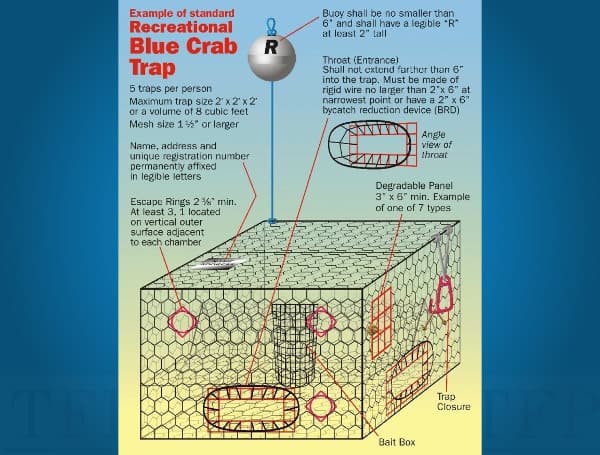Starting in March, recreational crab traps in Florida will be required to have rigid funnel openings no larger than 2 x 6 inches at the narrowest point or 2 x 6-inch bycatch reduction devices installed to reduce accidental trapping of diamondback terrapins, which has been a significant threat to the species.
The rule was approved by the Florida Fish and Wildlife Conservation Commission (FWC) in December 2021 and goes into effect on March 1. It is part of a larger effort to conserve terrapins, a small turtle species found in brackish waters across the state.
Studies have shown that BRDs can greatly decrease incidental terrapin mortality by preventing them from entering crab traps, while still allowing blue crab catch.
In the news: FWC Waives 2022-2023 Commercial Stone Crab Trap Tag Requirements In Affected Florida Counties
With this requirement, the FWC hopes to ensure the continued survival and recovery of terrapin populations in Florida. BRDs can be installed on existing crab traps and a limited supply of these devices are available for free to Florida’s recreational crabbers.
Diamondback terrapins are medium-sized turtles that live in brackish water habitats statewide, including salt marshes, barrier islands, mangrove swamps, tidal creeks, and rivers.
They eat a variety of foods including snails, crabs, clams, mussels, worms, fish, and plants. Five of the seven subspecies occur in Florida, three of which can be found nowhere else in the world.
Android Users, Click Here To Download The Free Press App And Never Miss A Story. Follow Us On Facebook Here Or Twitter Here. Signup for our free newsletter by clicking here.

